When most people think of the Ford GT40, they picture the muscle and might that dominated Le Mans in the late ’60s. But tucked within that story is a leaner, more focused version—the 1969 GT40 Lightweight. This wasn’t just about raw power; it was about shaving pounds, refining handling, and creating a car built specifically to excel on the track. It stripped away comfort and convenience to deliver a pure driving experience, aimed squarely at racers who wanted a sharper edge. This article digs into what made the Lightweight GT40 such a unique chapter in Ford’s racing legacy.
A Racing Origin Rooted in Le Mans

The 1969 Ford GT40 Lightweight was born from Ford’s relentless pursuit of speed at Le Mans. This version trimmed the GT40 down to shed weight, focusing on pure performance rather than comfort. Built mostly for the track, it aimed to improve agility and braking. Ford took the standard GT40 and replaced many steel parts with aluminum, cutting nearly 200 pounds off the curb weight. That drop made a serious difference on the high-speed corners and braking zones of endurance racing.
The Lightweight was less about luxury and more about function. Inside, the cabin was stripped down, with a bare minimum of gauges and switches. Even the windows were thinner to save weight. This car was built for drivers who wanted nothing between them and the track.
Under the Hood: The 302 and 351 Engines
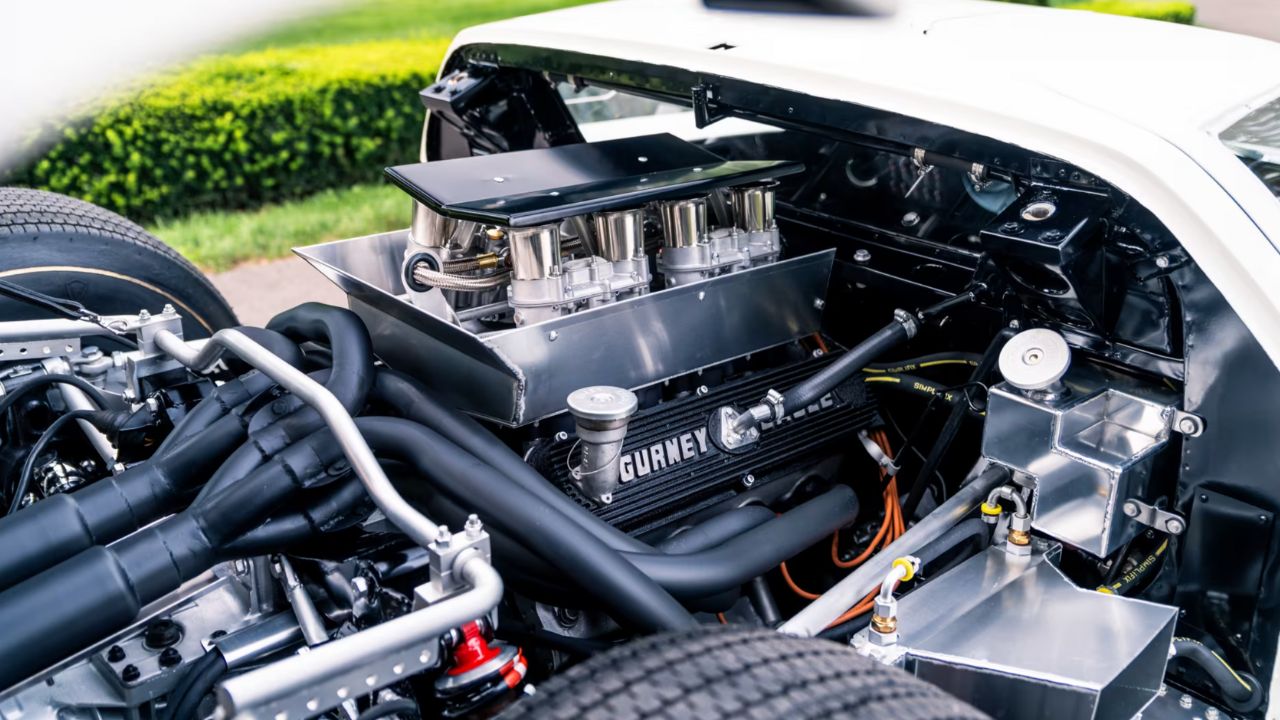
Most 1969 Lightweight GT40s came with a small-block V8 engine, either a 302 or 351 cubic inch displacement. These engines were tuned for a balance of power and reliability, producing around 400 horsepower. It was enough to push the lightweight chassis hard without compromising durability on long races. The focus was on mid-range torque to keep the car responsive through corners and on acceleration out of turns.
The engine was paired with a close-ratio 5-speed manual transmission that offered precise control. Its racing pedigree meant everything from the cam profile to the carburetors was chosen to maximize power delivery while keeping the car balanced on the road.
Chassis and Weight Savings

The Lightweight GT40 featured an aluminum monocoque chassis, which was a significant departure from the standard steel frame. This change was crucial in reducing overall weight. With much of the body panels also aluminum, the total weight dropped to just under 2,300 pounds. For a car with a powerful V8 and a full racing setup, that’s seriously light.
Weight savings weren’t just for straight-line speed. The reduced mass helped improve braking and cornering agility, letting the car stay nimble even at high speeds. The lower weight also reduced wear on tires and suspension parts, important for long-distance racing.
Suspension Setup for Precision Handling

The suspension system was designed for sharp, predictable handling on demanding circuits. Up front, the GT40 Lightweight used double wishbone arms with coil springs and adjustable dampers. This setup allowed fine-tuning for track conditions, keeping the tires planted through fast corners.
At the rear, the car employed a live axle with trailing arms and coil springs, combined with adjustable shocks. While not as exotic as some race cars with independent rear suspension, this setup was durable and provided consistent performance under heavy loads and high-speed turns. Overall, the suspension balance gave drivers confidence pushing the car hard.
Aerodynamics That Worked

Aerodynamics played a major role in the GT40’s performance, especially at Le Mans. The Lightweight retained the low-slung body shape that made the GT40 so iconic, designed to cut through air with minimal drag. Subtle tweaks to the front splitter and rear deck helped improve downforce without sacrificing top speed.
The car’s low profile, just 40 inches tall, reduced air resistance and helped keep it stable at 200-plus miles per hour. Venting and cooling were carefully integrated into the design, allowing the engine and brakes to stay cool under racing conditions.
Interior: Spartan but Effective
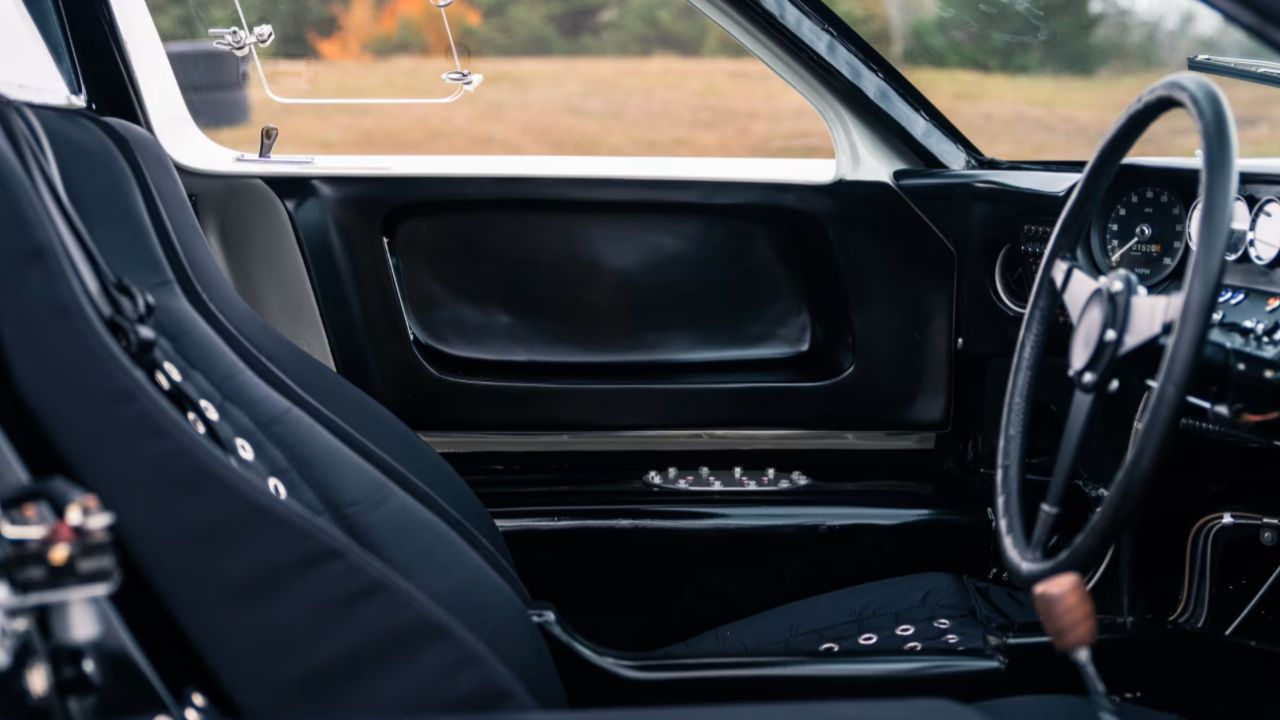
Inside, the 1969 GT40 Lightweight was stripped down to the essentials. There was no room for luxury touches—no carpeting, no radio, no air conditioning. Instead, the focus was on weight reduction and functionality. The seats were lightweight racing buckets with basic harnesses, designed to hold the driver steady in high-speed maneuvers.
The dashboard featured a minimal cluster of analog gauges: tachometer, oil pressure, water temperature, and fuel level. Every switch and control was within easy reach. This no-frills approach was typical for a race-focused car, emphasizing the driver’s connection with the machine.
Brakes and Tires Built for Racing
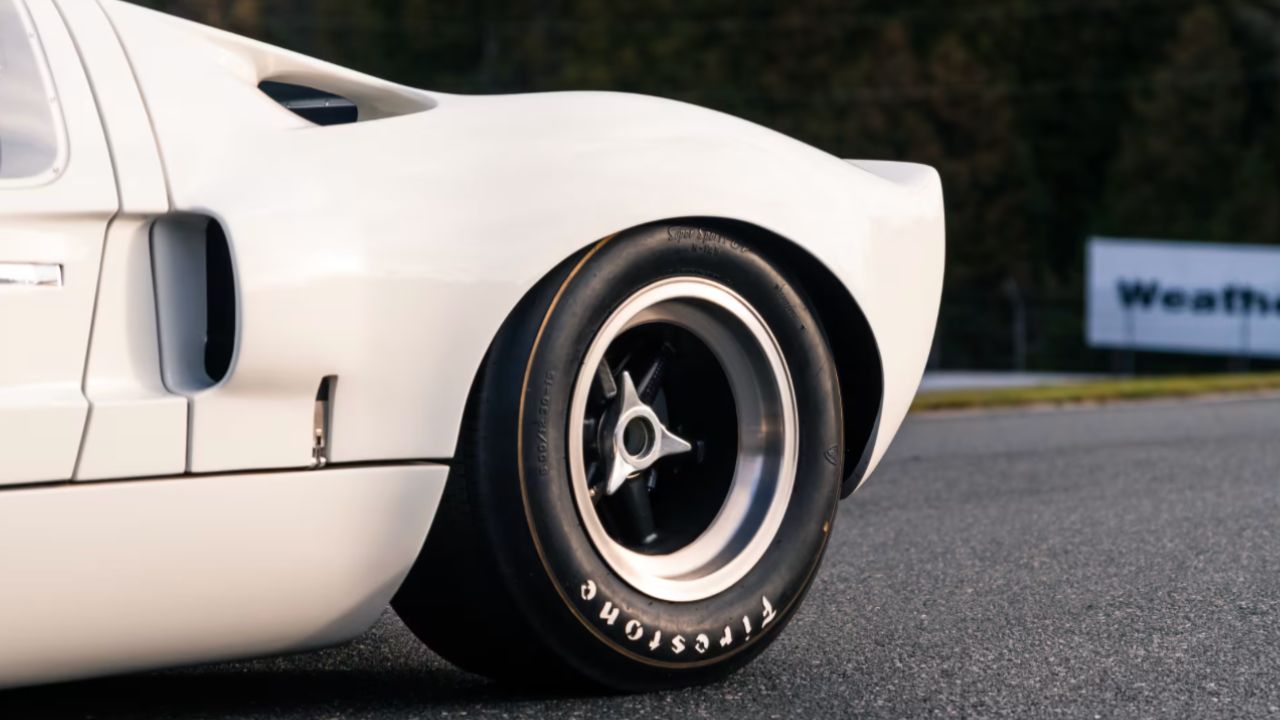
Stopping power was crucial for a car as fast as the GT40 Lightweight. It used ventilated disc brakes on all four corners, a step up from the drum brakes on many production cars of the era. This allowed for better heat dissipation and more consistent braking during long stints on the track.
Tires were specially selected racing slicks or grooved tires, sized to provide maximum grip. The wide stance of the wheels and tires also helped keep the car planted, while the brakes gave the driver the confidence to push deep into corners.
The Lightweight’s Role in Ford’s Racing Legacy

Though it never completely replaced the heavier GT40s, the Lightweight played a vital role in Ford’s race efforts. It was used primarily in events where agility and handling mattered most. Many privateer teams preferred the Lightweight because it was easier to maintain and tune compared to more complex race cars.
The Lightweight GT40 helped Ford stay competitive in endurance racing, bridging the gap between brute force and finesse. Its design philosophy influenced future race cars by proving that less weight could equal more speed.
Production Numbers and Rarity

Only about 30 Lightweight GT40s were built in 1969, making this car one of the rarest Ford racing machines. Each was hand-assembled with a focus on precision and quality, ensuring that every unit performed at a high level. Their limited numbers make them highly sought after by collectors today.
Despite their rarity, many of these cars remain in excellent condition, often campaigned in historic racing events. Their combination of lightness and power still impresses those who get behind the wheel or simply admire their design.
Legacy and Influence Today
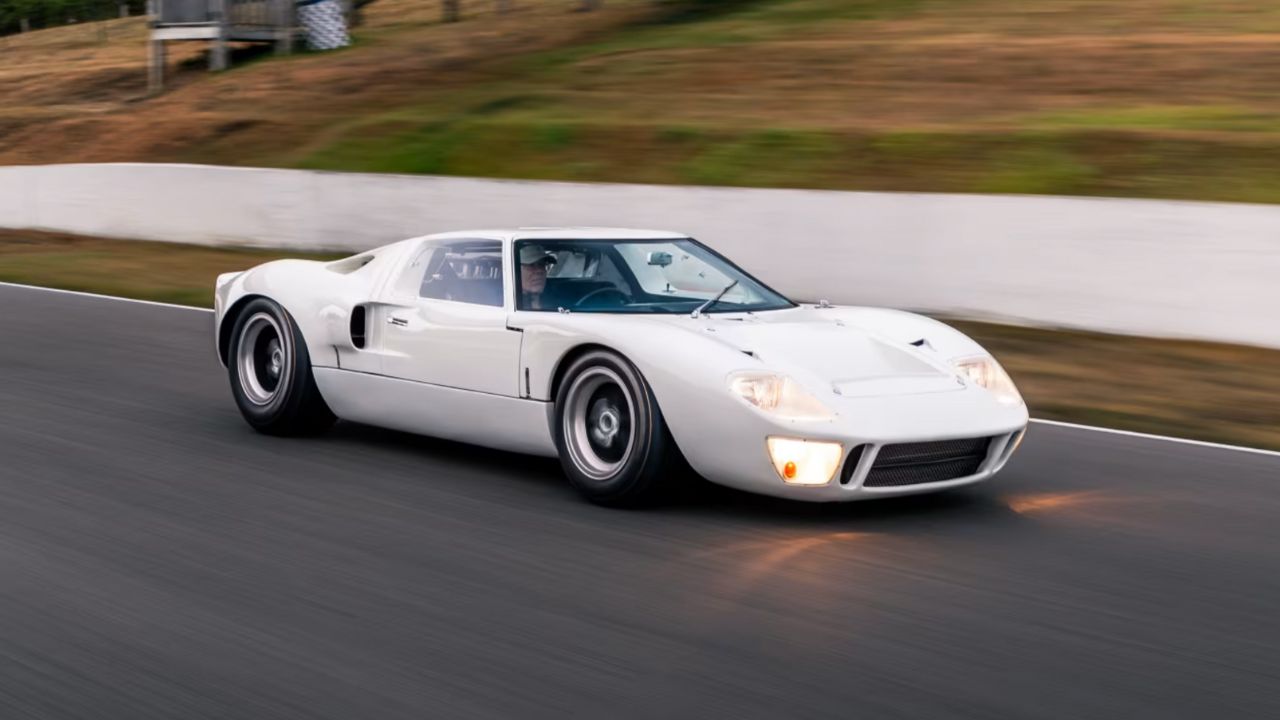
The 1969 Ford GT40 Lightweight remains a benchmark for race car design and engineering. Its emphasis on cutting weight and maximizing efficiency continues to inspire modern race cars and performance vehicles. Even today, lightweight construction is key to improving speed and handling.
Collectors and racers alike respect the Lightweight GT40 not just for its history but for the way it exemplifies a focused, purposeful approach to building a car. It’s a reminder that sometimes, less really is more when it comes to performance.
Like what you read? Here’s more by us:
*Created with AI assistance and editor review.

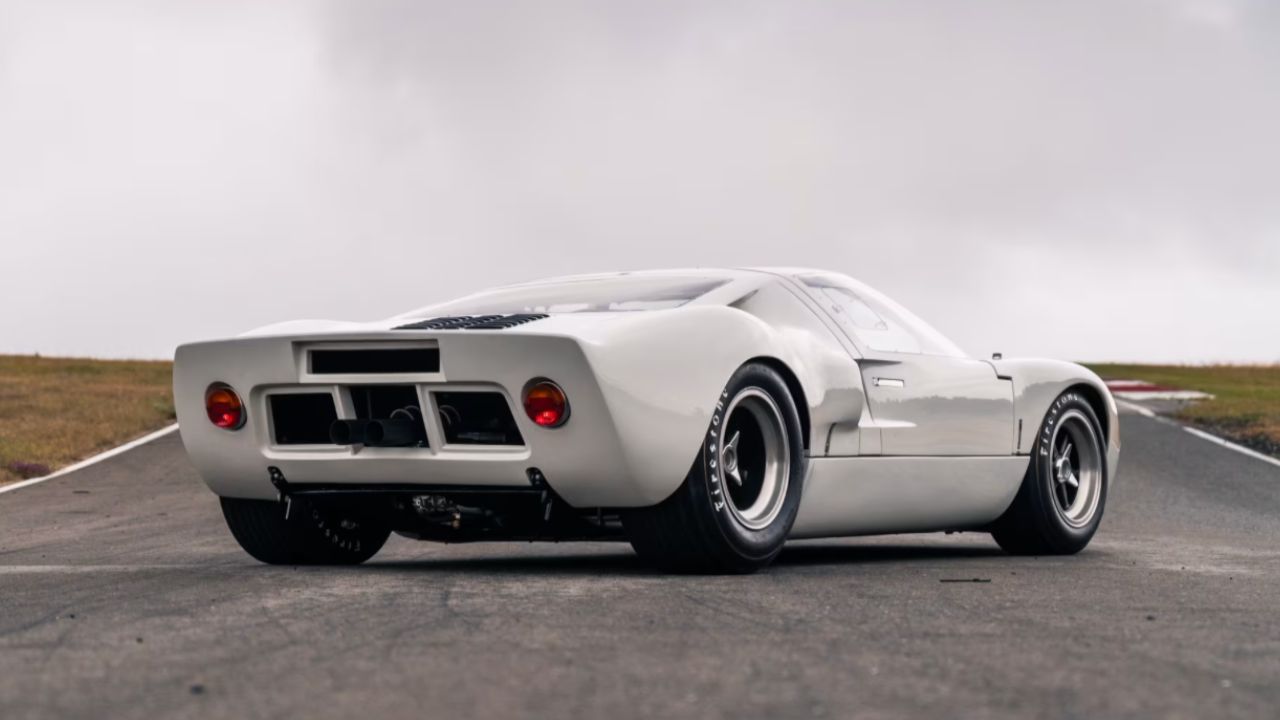





Leave a Reply